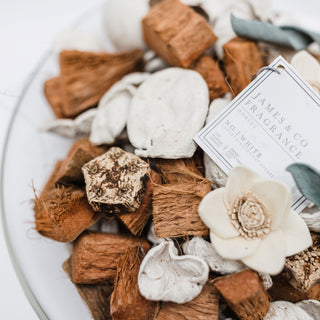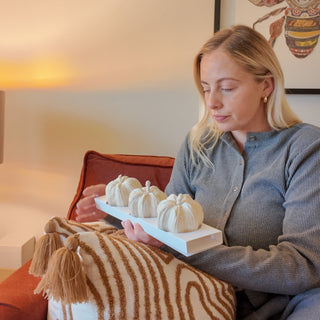A scented candle is a must in every household, but it is essential that you know how to burn them happily and safely to ensure your home is filled with fragrance bliss for hours on end.
To keep your candles looking and performing at their best (and safest), follow our tips below:
1. Trim your wick to no more than 1cm before use
We can't express the importance of maintaining a short wick to get the most of your candle. Long, or crooked wicks can create high flames, smoking, or sooting. Trimming your wick to 1cm controls the size of the flame, allowing you to get the most time out of your candle.
2. Burn your candle until the wax has pooled to the edges
Especially important when burning your candle for the first time. It is essential that you burn your candle until the wax has melted and pooled across the entire surface, up to the sides of the candle vessel. Burning for less time can cause the candle to 'tunnel', resulting in a build-up of wax around the vessels sides, reducing maximum burn time.
3. Place your candle on a flat, stable, heat resistant surface
This will help to prevent possible heat damage to non-heat resistant surfaces as well as ensuring an even burn. If your candle is on a slanted surface the wax will melt unevenly, reducing your candles maximum burn time. Also essential to keep out of reach of children and pets.
4. Keep the wax pool clear of debris
It is essential that you keep the wax pool clear of any matches, wick trimmings and any other debris as these can act as a secondary wick, encouraging your candle to burn faster.
5. Keep your candle away from windy spaces
Always avoid burning your candle near open windows, vents or air currents. Draughts decrease burn time, cause uneven burning, smoking and diminished scent throw.
6. Always extinguish your candle with a snuffer
You should always use a candle snuffer to extinguish your candle. This is the safest way to ensure no hot wax is splattered on surfaces. Never blow out or use water to extinguish. Centre and straighten the wick as burning for long periods of time can cause the wick to move or slant.


















